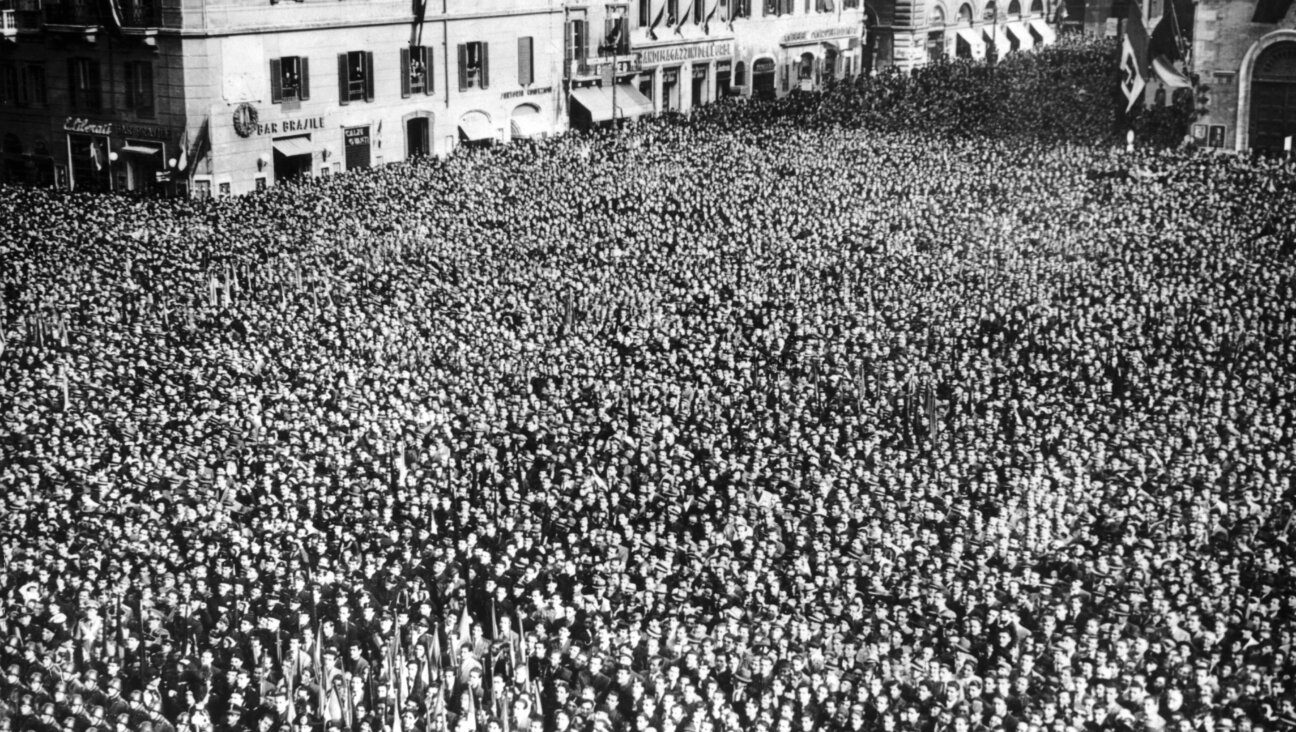From Suitcase to ‘Suite Française’

Prodigal Daughter: Némirovsky perished in the Holocaust, despite converting to Catholicism Image by COURTESY RANDOM HOUSE AUSTRALIA

By the Waters of Biarritz: Nemirovsky (left) with her mother, Fanny, in 1912 or 1913. Image by IMEC
The Life of Irène Némirovsky, 1903–1942
By Olivier Philipponnat and Patrick Lienhardt, translated by Euan Cameron
Alfred A. Knopf, 448 pages, $35
Many recently released novels have been written by authors who are unavailable for interviews, on account of their posthumous status. But even more thrilling than the publication of works by Roberto Bolaño, Ralph Ellison, Stieg Larsson, Vladimir Nabokov and Henry Roth was the recovery of “Suite Française,” an ambitious project that Irène Némirovsky was working on when deported to Auschwitz in 1942.
Retrieved from a suitcase by the author’s daughter, Denise, the manuscript contains two sections of an intended five-part epic about France under German occupation. Jonathan Weiss, Némirovsky’s first biographer, contends in “Irène Némirovsky: Her Life and Works” that “‘Suite Française’ would have been, in its final form, one of the most important works of literature produced in twentieth-century France.”
Even truncated, the brilliant novel, which appeared in French in 2004 and in English translation in 2006, evoked comparisons to Tolstoy and Balzac and enjoyed commercial and critical success. The enthusiastic reception of “Suite Française” in dozens of languages encouraged posthumous release of another of her unpublished texts, “Fire in the Blood” (2007), as well as an ongoing plan to restore earlier books to print. More than 60 years after perishing in the Holocaust despite her conversion to Catholicism, Némirovsky was world famous.
It was not the first time. Olivier Philipponnat and Patrick Lienhardt make clear in their book that Némirovsky was not discovered, but rather re-discovered, in 2004. She was a prolific and popular writer throughout the 1930s, but France’s discomfort over its complicity with genocide
resulted in her neglect after liberation. Working with a wider range of interviews and documents than Weiss used, Philipponnat and Lienhardt have produced a richly textured, dramatic account of being Russian, French, Jewish and Catholic during a barbarous time when none of those adjectives guaranteed survival.
Their biography opens with a chilling scene aboard Convoy No. 6 — densely packed cattle cars that for three days transported Némirovsky and 927 other Jews, who were in a holding camp in France, to a death camp in Poland. It concludes with the publication of “Suite Française” and with the question, “Who can have any doubts today that Irène Némirovsky is very much alive?”
The only, lonely child of mismatched parents, she was born in Kiev in 1903. Her father, Leonid, was a tenacious, avaricious Jew from an indigent background whose “sole preoccupation was to prosper, unfettered, and to erect a bulwark of gold between himself and his childhood.” Through banking, imports and mining, he amassed enough wealth to wed Anna “Fanny” Margoulis, a middle-class monster of vanity and self-indulgence who scorned her upstart husband and flaunted numerous lovers. She was, Philipponnat and Lienhardt write, “conceited, vain, pleasure-seeking and spiteful,” and she resented and ignored her impressionable daughter.
At age 2 1⁄2, Némirovsky barely survived a pogrom in Kiev. Leonid’s connections allowed the family to live beyond the Pale, in a splendid residence in St. Petersburg, but the Bolshevik Revolution, which left 300,000 Ukrainian Jews dead in its wake, forced them to flee to Finland and then to Sweden. In 1919, they settled in France, where they had been vacationing regularly, and which Némirovsky, tutored in French from an early age, deemed “the most beautiful country in the world. La Belle France, though, never quite reciprocated her affection, refusing repeated applications for citizenship and eventually packing Némirovsky off to slaughter.
Like Samuel Beckett, Eugène Ionesco, Nathalie Sarraute and Andreï Makine, she was a gifted translingual writer, excelling in her adopted French. But in an atmosphere of toxic anti-Semitism, contributions to French culture were unable to neutralize Némirovsky’s Jewish origins. She grew up in an assimilationist household that celebrated Christmas and Easter, and with a mother who eschewed the sound of Yiddish and the smell of Jewish foods. When she converted to Catholicism, in 1939, it was, her biographers suggest, less out of Christian piety than out of a desire to secure the safety of her two daughters. They survived, but friendships with Catholic clergy and with influential fascists did not spare Némirovsky or her banker husband, Michel Epstein, from the fate reserved for Europe’s Jews.
The principal characters in “David Golder” (1929), the novel that established her reputation, are Jews, repulsive variations on racist stereotypes. Charged with being a self-hating Jew, Némirovsky responded, “I simply drew a portrait of papa and mama.” The biographers ask, “Had ‘David Golder’ been written in 2009 by Bernard Madoff’s daughter, who would dream of accusing her of anti-Semitic views?” (Since the French edition dates from 2007, pre-Madoff, the sentence must have been inserted in Euan Cameron’s translation). The grownup author wreaked her revenge for a miserable childhood by making the character of Mama abhorrent in “The Wine of Solitude” (1935) and other fictions.
When Leonid died, and Fanny denied her access to the family fortune, Némirovsky published prodigiously in order to maintain her affluent tastes. Though her stories appeared beside vicious anti-Semitic pieces in xenophobic magazines, Philipponnat and Lienhardt argue that “Irène Némirovsky was a writer, not a polemicist.” They present her as a serious artist whose theme is moral decline. That decline is nowhere more apparent than in the tribulations of her brief, productive life.
Steven G. Kellman is the author of “Redemption: The Life of Henry Roth” (W.W. Norton & Company, 2005) and “The Translingual Imagination” (University of Nebraska Press, 2000).
















